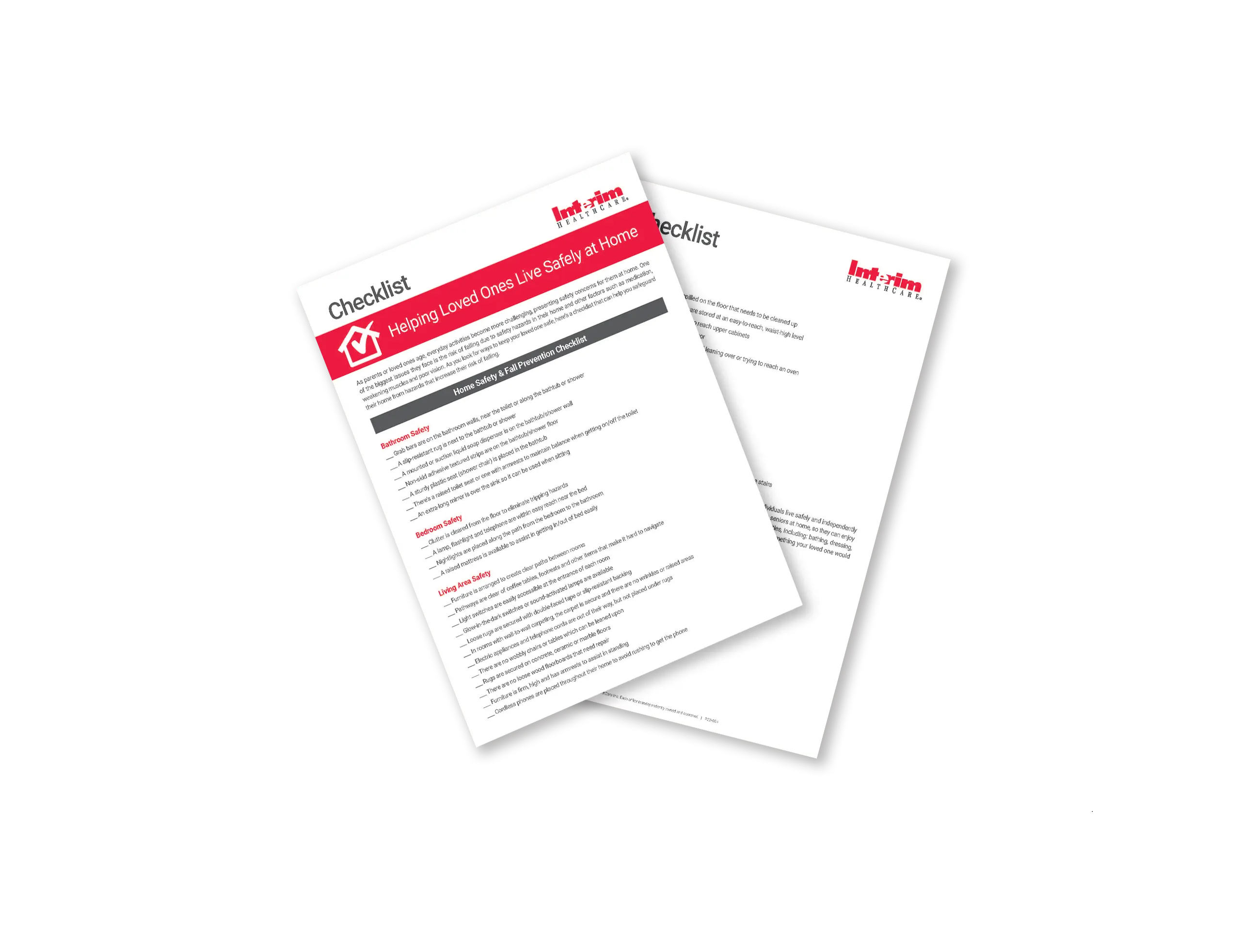
Peace of Mind at Home: Unveiling the Home Safety and Fall Prevention Checklist
Why is Fall Prevention for Seniors Important?
Falls can have devastating consequences for older adults, leading to fractures, reduced mobility, and a loss of independence. By taking steps to prevent falls, you can significantly improve a senior's quality of life and well-being through senior care.
What Can You Find in the Home Safety and Fall Prevention Checklist?
The home safety checklist for seniors provides a room-by-room breakdown of potential hazards and practical solutions to address them. Here's what you can expect:
- Living Room: The guide identifies areas like loose rugs, uneven flooring, and electrical cords as potential tripping hazards. It offers solutions such as removing throw rugs, securing electrical cords, and installing nightlights to improve visibility.
- Bathroom: This room presents a high risk for slips and falls due to wet surfaces. The checklist suggests installing grab bars in the shower and bathtub, using non-slip mats, and ensuring proper lighting to enhance safety.
- Bedroom: The guide recommends placing nightstands within reach for storing essential items and ensuring proper bed height for easy entry and exit.
- Kitchen: This section addresses potential hazards like slippery floors, cluttered countertops, and sharp objects. The checklist suggests using non-slip mats, keeping frequently used items within easy reach, and properly storing sharp objects to prevent accidents.
- Stairs and Hallways: Uneven steps, poor lighting, and loose handrails are highlighted as potential fall risks. The guide emphasizes the importance of adequate lighting, ensuring handrails are secure, and utilizing contrasting paint colors to improve stair visibility.
Beyond the Checklist: Additional Fall Prevention Tips
The Home Safety and Fall Prevention Checklist goes beyond a basic room-by-room assessment. It offers additional valuable insights on fall prevention for seniors:
- Footwear: Choosing shoes with good traction and proper support can significantly reduce the risk of slips and falls.
- Vision and Hearing: Regular eye and ear checkups ensure that seniors have optimal vision and hearing, allowing them to navigate their environment safely.
- Exercise and Strength Training: Exercise programs can enhance balance, muscle strength, and flexibility, reducing the risk of falls.
- Medication Review: Certain medications can cause dizziness or lightheadedness, increasing the risk of falls. Consulting a healthcare professional about potential side effects is crucial.
- Home Healthcare Worker Safety: For families utilizing home healthcare services, the checklist provides additional considerations for ensuring the safety of both the senior and the caregiver.
Safety for Older Adults at Home: A Shared Responsibility
Creating a safe living environment through the home safety assessment checklist for elderly contributes significantly to fall prevention for seniors. However, it's a shared responsibility. Open communication, encouraging good habits like wearing appropriate footwear, and being mindful of potential hazards are all essential aspects of keeping seniors safe at home.
Download Your Home Safety and Fall Prevention Checklist Today
By working together and utilizing the Home Safety and Fall Prevention Checklist, you can create a more secure environment for your loved one. Download your complimentary copy today from Interim HealthCare. Remember, prioritizing fall prevention allows seniors to maintain their independence and enjoy a better quality of life within the comfort of their own home.